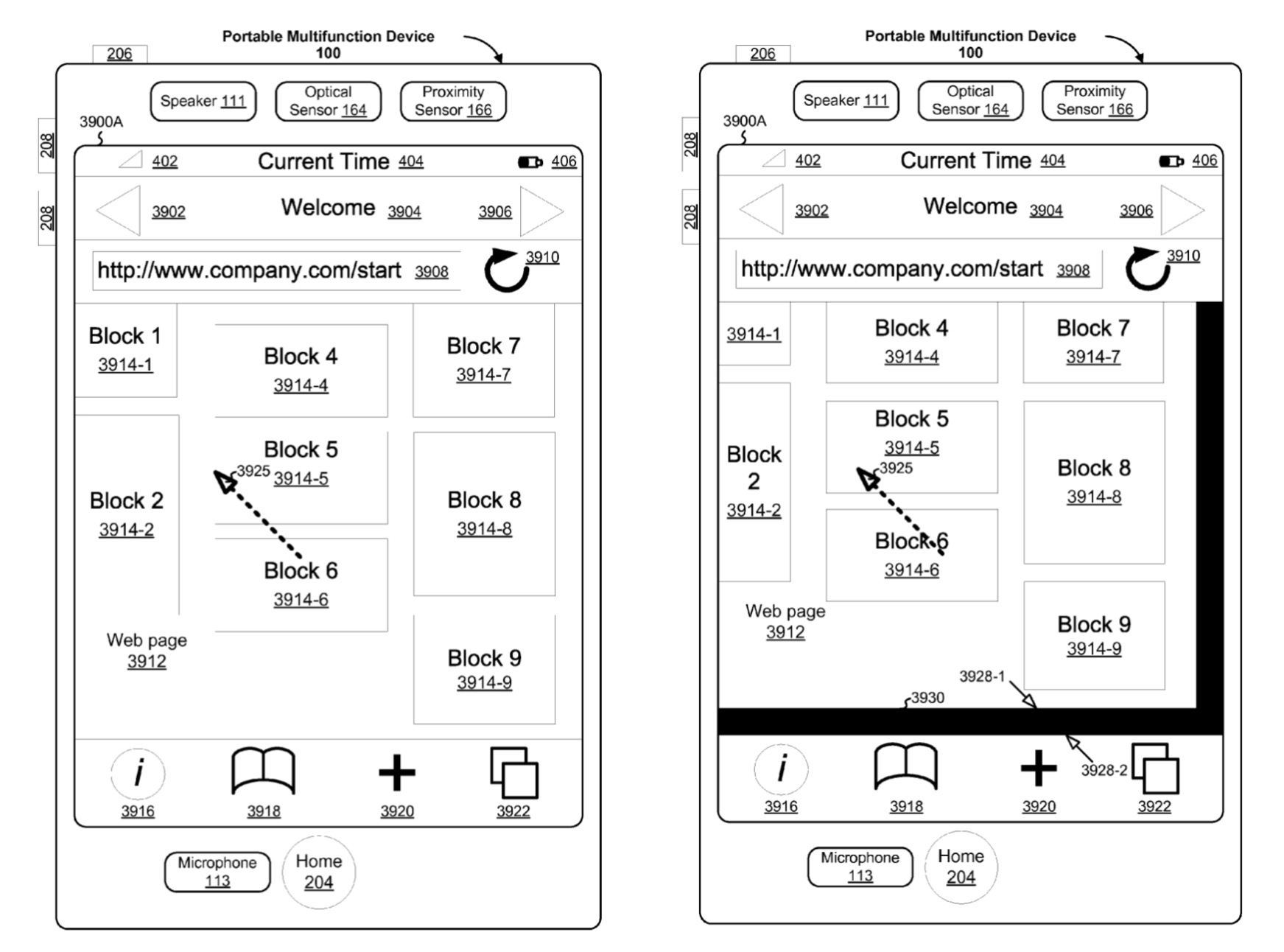Having rejected Apple’s iPad mini trademark application last week, the United States Patent and Trademark Office (USPTO) has now dealt another major blow to the iPhone maker. For the second time, USPTO has invalidated the key claim of Apple’s so-called rubber-banding patent, an iPhone feature which bounces the user interface when a user scrolls content past the end of a page. USPTO last October ruled the invention invalid. On the other hand, while this “final” decision certainly has more weight than the first, Apple still has a few options left until the ruling becomes truly final…
Although USPTO has actually revived three claims from Apple’s patent, the remaining 17 claims remain invalidated. Among them is claim 19, the famous rubber-banding feature that Apple successfully asserted against Samsung in the monster August 2012 $1.05 billion lawsuit.
Patent blogger Florian Müeller discovered Samsung’s court documents where the Galaxy maker points out that USPTO a few days ago again invalidated claim 19 in a “final” Office action.
The October ruling invalidated all 20 claims of the invention. Although claims 14, 17 and 18 have now been revived, the remaining 17 claims are invalidated, including claim 19 which covers the overscroll bounce invention.
Judge Lucy Koh deemed Claim 19 non-novel rather than obvious, based on two prior art references. Apple now faces the burden of proving its invention is not related whatsoever to those prior art references while making the case that there was also an “inventive step involved between the prior art and this claim.”
Per CNET, Apple in a new filing argues the overscroll bounce patent isn’t dead yet. Apple’s attorney Michael Jacobs wrote in the filing:
A ‘final’ office action does not signal the end of reexamination at the USPTO, much less the end of consideration of the patentability of the claims under reexamination.
Rather, ‘finality’ is primarily a procedural construct that limits the right to amend claims and introduce evidence as a matter of right in reexamination.
In short, reexamination of the ‘381 patent is far from conclusion.
According to Müeller, Apple now has two months to respond and that period can be extended. The “final” decision can still be appealed and a really final decision could be years away, provided the Central Reexamination Unit reconsiders such “final” decisions.
Even if it doesn’t, this “final” rejection can and certainly will be appealed to the Patent Trial and Appeal Board (PTAB), sort of an appellate division within the USPTO. The PTAB can make a final decision as far as the USPTO is concerned, but frequently remands a matter to the Central Reexamination Unit.
And a final-final USPTO decision can then be appealed to the United States Court of Appeals for the Federal Circuit. It will take years before a truly final decision on the validity of this patent issues.
The overscroll bounce is filed as a U.S. Patent No. 7,469,381 and is one of Apple’s prized iPhone inventions.
According to the patent abstract:
In response to detecting the movement, an electronic document displayed on the touch screen display is translated in a first direction.
If an edge of the electronic document is reached while translating the electronic document in the first direction while the object is still detected on or near the touch screen display, an area beyond the edge of the document is displayed.
After the object is no longer detected on or near the touch screen display, the document is translated in a second direction until the area beyond the edge of the document is no longer displayed.
This development doesn’t bode well for a pending second trial meant to re-calculate damages on the remaining fourteen Samsung products after Judge Lucy Koh shaved $450 million off the original $1.05 billion jury verdict.
